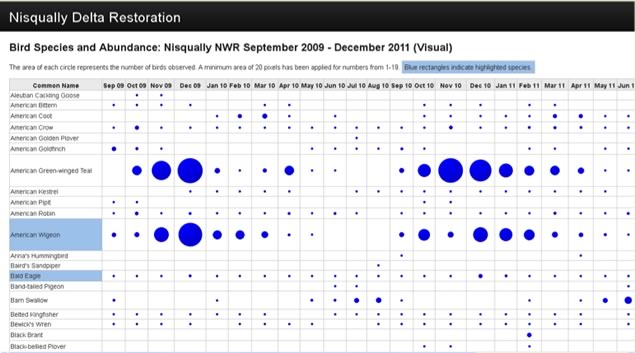Monitoring Design: Temporal Scale
Timing of monitoring surveys that incorporate the temporal variability of physical attributes and their interactions with biological processes are critical to the success of a monitoring program. Temporal scales can be short or long, such as daily changes in water quality due to light availability and tidal height, or seasonal changes in bird or fish abundance due to migratory patterns. It is also important to refer back to monitoring questions and objectives when considering temporal scale. For example, if your monitoring objective is to understand benthic invertebrate prey availability for migrating shorebirds, sampling should occur during times of peak shorebird use. Sampling frequency (e.g. continuous, daily, monthly, seasonally) will differ for each monitoring metric, but should reflect temporal scales, monitoring questions, resource availability and instrumentation data capacity and maintenance.
In tidal systems, sample timing will be dictated by these criteria along with accessibility during high and low tides. For example, benthic invertebrate sampling should occur during low tide when mudflats and channel bottoms are exposed. Other sampling methods are more complex such as fyke netting for juvenile salmonids, which requires setting the net across a tidal channel during a high tide and then allowing the channel to drain throughout an outgoing tide before sampling fish.

